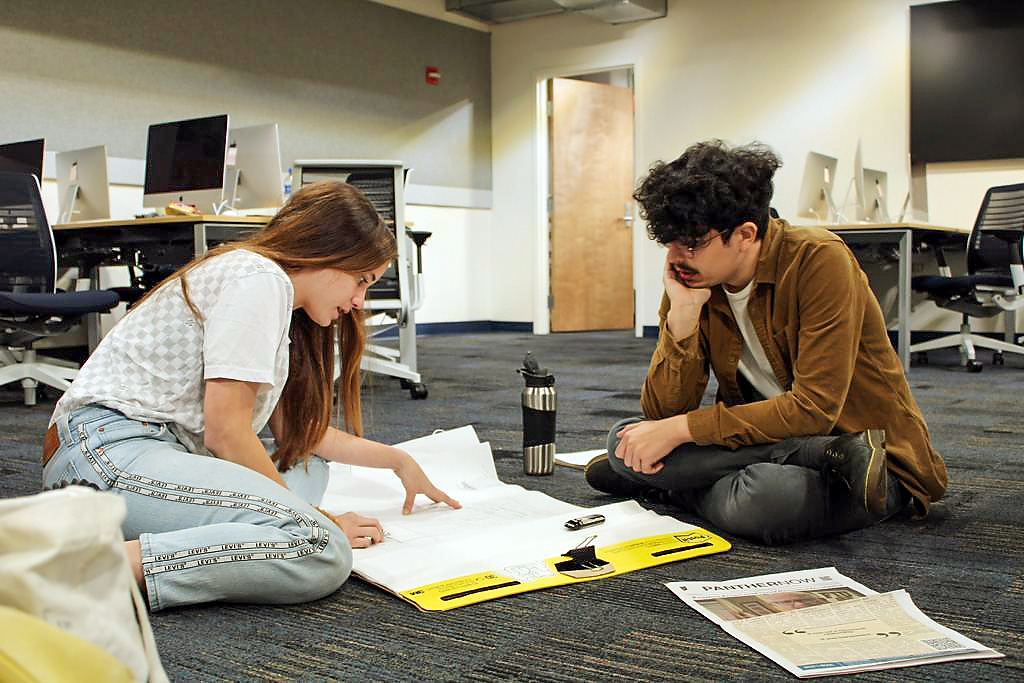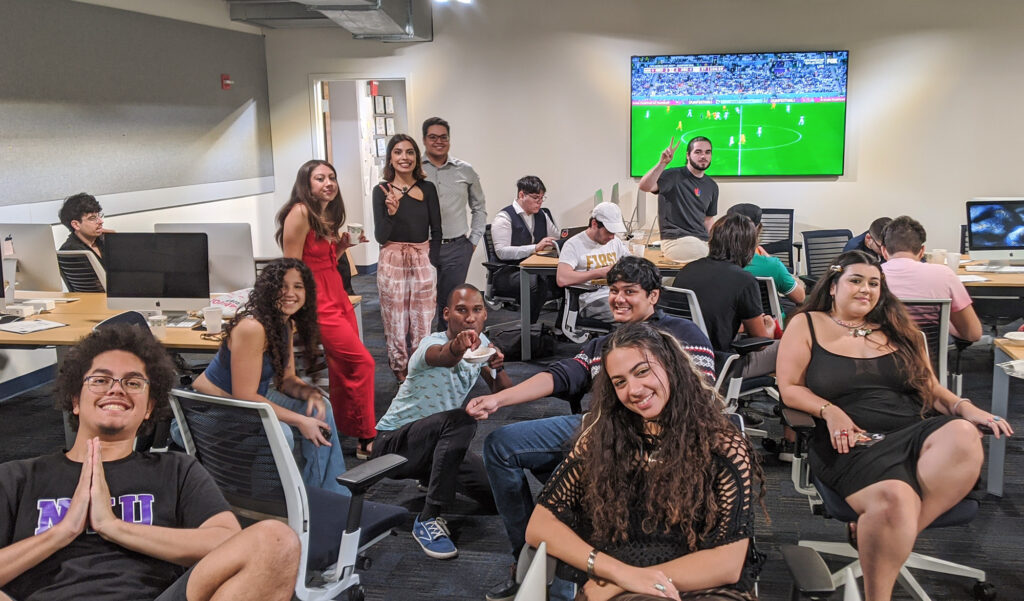As journalism industry contracts, universities brace for change

It is not a secret — the journalism industry continues to shrink.
Locally, community newspapers have taken a hit.
In April, the Miami Herald and el Nuevo Herald, which are part of McClatchy — one of the largest newspaper companies nationwide, saw the worst round of job cuts of its news staff since 2019.
According to the Miami New Times, the layoffs at the Miami Herald and el Nuevo Herald reflected a nationwide trend of major newspaper chains making cuts in local newsrooms.
McClatchy and the Miami Herald did not respond to a request for comment from the Latino Reporter.
“Local communities have seen their newspapers disappear and their local radio stations disappear,” said Anthony Hatcher, the chair of the Department of Journalism at Elon University in North Carolina.
On the national level, media outlets are seeing a similar trend.
In March, NPR — a nonprofit media organization that relies on dues and fees paid by member stations, as well as grants and underwriting from corporate sponsors — laid off more than 100 employees. This is their largest layoff since the 2008 recession.
Universities nationwide have also seen a decrease in journalism students.
According to a study conducted by Texas Tech University, student enrollment in undergraduate journalism and mass communication programs nationwide decreased by 9.9% between 2018 and 2021.
Glenn Cummins, a professor of journalism and creative media industries at Texas Tech University, said the results were also reflective of the impact of the COVID-19 pandemic.
“The decrease we saw in journalism [and] mass communication enrollments is something we saw not just in our field, but [in] a lot of different disciplines,” Cummins said. “It’s hard to say that that’s a function of interest in journalism or just a broader artifact of the fact that we went through a fairly unprecedented worldwide event.”
Cummins and Texas Tech University’s research also found that enrolled undergraduate students who identify as a minority (non-White, U.S. citizens) were down by 4.8%.
An institution that saw a slight decline in enrollment numbers was the University of Florida — a public research institution in Gainesville, FL.

Enrollment at the College of Journalism and Communications (which includes advertising, journalism, media production management, technology and public relations) slipped between spring 2020 and spring 2023 by about 7% — equating to 168 students.
But James Babanikos, the associate dean for Undergraduate Affairs at the University of Florida, said those numbers should not be discouraging to prospective journalism students.
“We see layoffs in places like the LA Times almost every week, but I’m optimistic about where our industry is headed,” Babanikos said. “There are many more opportunities for journalism and communications students these days than was the case 10 or 20 years ago.”
The Lee Caplin School of Journalism & Media at Florida International University also saw a decrease in journalism students. Between 2019 and 2022, enrollment went down by 36%.
However, Charles Strouse, the school’s assistant director, said he’s optimistic about the enrollment numbers for the upcoming academic year because as of June, applications for the program were up by 21.7% — which he is attributing to a “better climate for journalists and journalism.”
“Getting technology, using it, being fair, balanced and independent is really key to good media,” Strouse said about what they teach prospective journalists. “And that’s really what we’re trying to ingrain in our students.”
One of the ways in which FIU students have been applying what they learned in the classroom is through PantherNOW, the institution’s student-run newspaper which usually has between 20 to 40 writers per semester.
In an interview with Latino Reporter, Elise Gregg — the editor-in-chief during the 2022-23 academic year at PantherNOW— said student reporters should not be discouraged by the challenges of a shrinking journalism industry. She encouraged them to get involved in student media to improve their writing and reporting skills.
“The world needs people who are going to help others understand what’s going on, because it’s a complicated world,” said Gregg, who has interned at the Miami Herald and is currently a fellow at News21 — a student reporting project in Arizona. “Not to say that journalists have all the answers, but we’re the ones putting ourselves out there to try to at least learn a little bit and tell you what we’ve learned.”

For the past 5 years, enrollment in journalism, media and film programs at Howard University — a historically Black private university in Washington, D.C. — has remained steady. Between 2020 and 2021, the programs at Howard had an increase in enrolled undergraduate students by 18 people from 149 to 167. But the number slightly decreased in 2022 to 165.
Ingrid Sturgis, the chair of the Department of Media, Journalism and Film at Howard University, argues that a degree in journalism is not “absolutely essential” for those wanting to become reporters.
“I think it’s important to get some kind of training, whether that is a B.A. degree or a master’s degree or a Ph.D., or just some training program to show you know how to maneuver as a journalist and how to be an ethical journalist,” said Sturgis, who has more than 20 years of experience in digital journalism.
Sturgis attributed the slight decrease at her institution to an increase in tuition prices: “Maybe we got a little bit more expensive than they anticipated.”
On the other hand, Elon University, a private institution in North Carolina, has had steady enrollment numbers for the past 6 years, with a variation of 8 to 10 students per year, which is attributed to graduating students. In the 2022-23 academic year, the Journalism department had 163 enrolled undergraduate students.
“I look forward to people like you and your generation to resurrect the news industry,” Hatcher said.
For students who want to work in the journalism industry, Cummins advised them to learn how to harness the power of social media and ensure that they always dig deeper to provide information to the public.
“I think what they need to do is embrace that change,” he added. “The advice I would [give] is to take advantage of all the different tools that they’ve grown up immersed in and to really use them in a meaningful way.”
Ammy Sanchez is a senior at Florida International University majoring in communications. She reports in English, Spanish and Portuguese, and is the producer of the South Florida Roundup — the Friday afternoon show at WLRN News. Reach her at ammysanchez001 [at] gmail [dot] com and on Twitter at @ammyelizabethh.